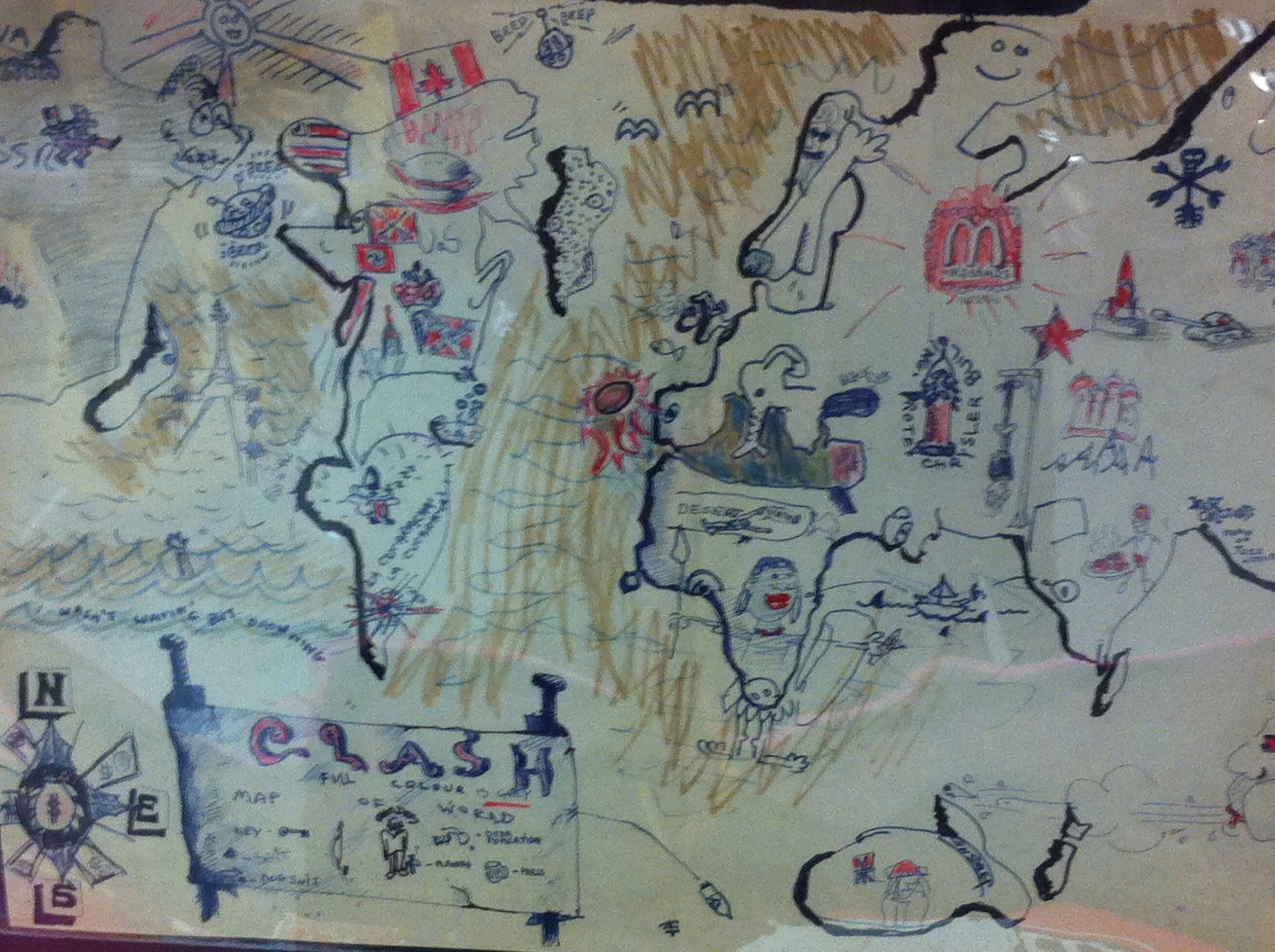The first indoor gig I ever want to was at the Marquee in September 1992. I’d already been to a couple of huge outdoor shows that summer – Reading, Madstock – but there was something special about going up town on a weekday to see a gig in a dark, sticky floored venue that stank of fags. It was the Irish band, Sultans Of Ping FC, best known for novelty hit “Where’s Me Jumper”, and I remember very little about the show or the venue for that matter other than the noise, the crush of people and the fact that everybody in the audience was asked to lie on their backs and wave their legs in the air for the final number. Oh, and I lost my watch in the moshpit.
I’m not sure whether I was even aware at the time that this wasn’t “the real” Marquee. That had been located on Wardour Street, whereas the Marquee I went to was at the bottom of Charing Cross Road pretty much opposite Sportspages. It closed a few years later and was turned into a Wetherspoons. The story of the Marquee – which started life underneath a cinema on Oxford Street before moving to Wardour Street – is told in a new book, co-written by Robert Sellers and Nick Pendleton. Nick is the son of Harold and Barbara Pendleton, the founders of the Marquee – and I interviewed Barbara for a piece in the Telegraph.

The Wardour Street Marquee was an extraordinary venue because of Harold and Barbara’s open-minded booking policy. The venue was open every night so there were plenty of slots to fill, which is why so many huge bands got their break at the Marquee – and continued to do so as tastes and genres changed. A lot of club venues become locked into a single scene, or even a single band – think of the Cavern or Eric’s in Liverpool for perfect examples – whereas the Marquee was much more promiscuous. It started with jazz but quickly embraced blues and R&B, before following those threads through to the 80s, taking in psych rock, hard rock, prog, pub rock, punk, new wave, heavy metal, goth, indie and hair metal. Name the leading band from any of these scenes – the Stones, Who, Pink Floyd, Cream, Hendrix, Led Zeppelin, Queen, Yes, King Crimson, Dr Feelgood, Sex Pistols, Wire, The Cure, Iron Maiden, Joy Division, Stone Roses, Guns N Roses – they all played the Marquee. Just about the only important band that didn’t was The Beatles. One of the charms of the book is seeing some of these line-ups and realising that pretty much every week for around 25 years, a legendary bands was on stage at the Marquee.
Playing the Marquee became a rite of passage for bands on the way up, while by the 80s it became the first port of call for many US bands. It was used for filming, and it was also used for secret shows – Bowie, The Stones, The Who, Tom Petty, The Police and loads more used it for warm-ups or special events.
The Pendletons developed parallel businesses, including artist management and promotion. They started an outdoor festival in Richmond that turned into the Reading festival – and for years, Reading was every bit as important as Glastonbury. There was also a studio, where The Moody Blues recorded “Go Now!”, Chelsea FC recorded “Blue Is The Colour” and Killing Joke recorded their debut LP – three of the finest records in anybody’s collection. The Marquee studio was where the Stock Aitken and Waterman team came together, working on Dead Or Alive’s “You Spin Around”, before they left for their own space.
The book goes into this in detail with plenty of great anecdotes about some of the most famous personalities to have played the venue, including Bowie, the Stones, Lemmy, Gilbert & George and Metallica. It’s a great read and an excellent way of understanding what arts and culture can do for a city and how many lives can be touched with memories that never leave them. That’s invaluable, and there are aren’t many places where it still happens in Soho.
The Marquee was revived a couple more times – once in Angel, now the 02, with a consortium that included Dave Stewart – and then back in the West End. The brand’s current owner tells me he does one day hope to reopen a Marquee in Soho, if he can find a willing partner- ie, a landlord prepared to accept their wider responsibility for maintaining the historic culture of an area rather than simply a devotion to their own bottom line. We can all dream, can’t we?






















